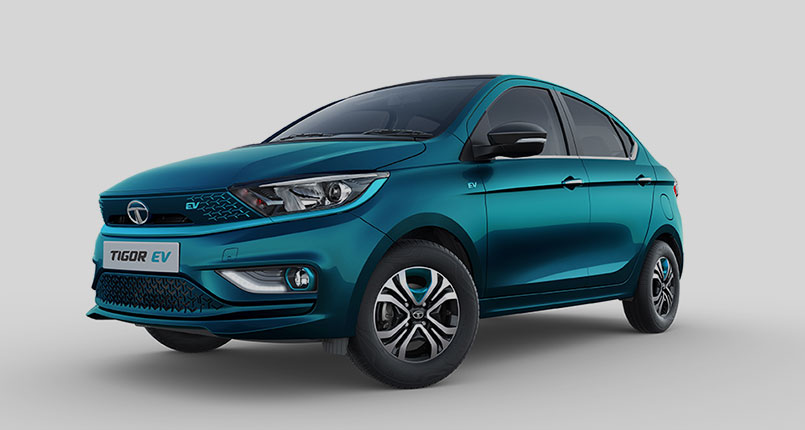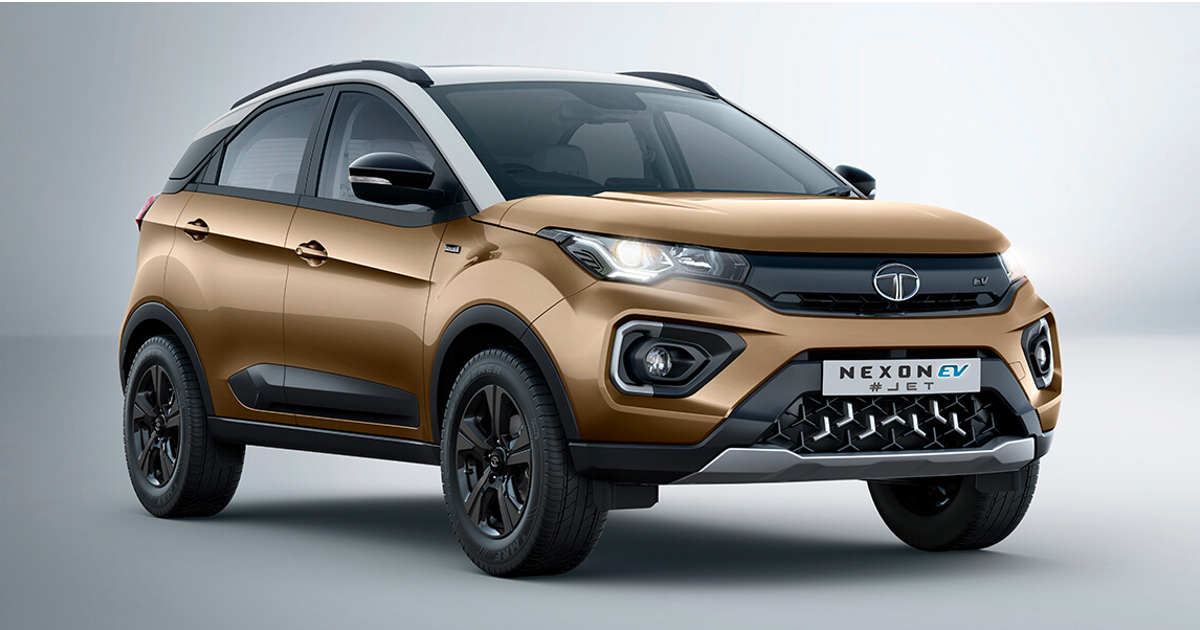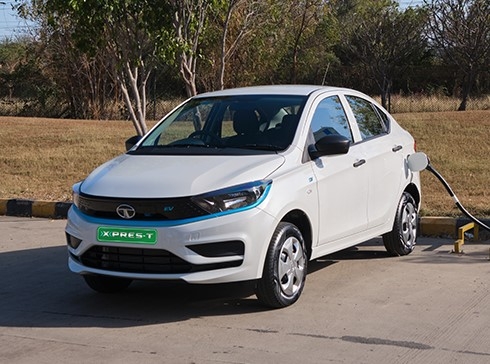TATA EV buying guide: Which TATA electric car is right buy for you? | 91mobiles.com
With the electric vehicle (EV) industry maturing and developing day by day, many people have started considering an electric car as their next ride. While there are many EV players in the country, Tata Motors comes on top when it comes to capturing a good chunk of the market share. Being one of the first manufacturers to tap into the EV space, Tata has been working rigorously on developing and enhancing the technology to make it more reliable for the end customer. As things stand, it now has as many as five electric cars in its portfolio. The recently launched Tata Tiago EV is the entry-level option, while the Nexon EV Max is the most premium car from Tata Motors yet. So, which one should you buy? That’s exactly what we are going to discuss in this article. Below is the list of Tata electric cars that you can buy in India right now along with their pros and cons.
TATA EVs launched in India
Following are the passenger Tata electric vehicles that are currently selling in India:
| MODEL NAME | PRICE (EX-SHOWROOM) |
| Tata Tiago EV | Rs 8.5 lakh |
| Tata Tigor EV | Rs 12.49 lakh |
| Tata Nexon EV Prime | Rs 15 lakh |
| Tata Nexon EV Max | Rs 18.34 lakh |
| Tata XPRES-T EV | Rs 13.04 lakh |
Which TATA EV is right for you?
If you’ve decided on getting a Tata EV and can’t seem to figure out which model to get, check out our brief guide below along with the pros and cons of each car to help you in your buying decision.
1. Tata Tiago EV
Starting off with Tata Tiago EV, it is the most affordable car in Tata’s electric vehicle (EV) portfolio. As a matter of fact, the Tiago EV is also one of the cheapest EVs you can buy right now in the Indian market. The Tata Tiago EV is a remake of the ICE-powered hatchback of the same name, which has been present in the market since 2016. Therefore, one may find many design similarities between both vehicles.

As for the specifications, Tiago EV is offered in two battery pack options with capacities of 19.4kWh and 24kWh. The smaller battery back is able to deliver a range of around 250km while the larger pack delivers a 313km range on a single full charge. Equipped with Tata’s signature Ziptron technology, the EV manages to go from 0 to 60kmph in just 5.7 seconds. With the 7.2kWh AC home charger, Tiago EV can be fully charged in 3 hours 36 minutes while with the DC charger it takes the battery from 10 to 80 percent in just under an hour. Tata has also baked in some smart features into the EV such as Apple CarPlay and Android Auto support, a Harmon-made infotainment touchscreen for playing videos and navigating to the destination. With Tata’s smartphone application, users can remotely control the AC, track the vehicle, locate a charging station and even get access to driving data analytics.
Tata Tiago EV price and availability
Tiago EV will be available pan-India with deliveries estimated to start from January 2023. The following are the introductory prices reserved for the first 10,000 customers who book the vehicle. The prices may change in the future once the allotted stock is depleted.
| Tata Tiago EV variants | Price (Ex-showroom) |
| Tiago EV XE MR | Rs 8.49 lakh |
| Tiago EV XT MR | Rs 9.09 lakh |
| Tiago EV XT LR | Rs 9.99 lakh |
| Tiago EV XZ+ LR | Rs 10.79 lakh |
| Tiago EV XZ+ Tech Lux LR | Rs 11.29 lakh |
| Tiago EV XZ+ LR (7.2 kW) | Rs 11.29 lakh |
| Tiago EV XZ+ Tech Lux LR (7.2 kW) | Rs 11.79 lakh |
Pros
- Affordable
- up to 313km range
- Regenerative braking
Cons
2. Tata Tigor EV
The next EV in Tata’s lineup is the Tigor EV, which is a premium hatchback boasting an appealing design and cool interiors. This particular car from the Indian automaker comes with an electric motor that can produce 74bhp and 170Nm of peak power and torque respectively. Running the show inside is a 26kWh Li-ion battery pack which is capable of delivering a range of around 306km on a single full charge. Speaking of charging, it takes approximately 8.5 hours for the battery to juice up from 0 to 80 percent using the home charger while the fast charger can accomplish that in about 65 minutes.

Additionally, with the Ziptron technology in place, it ensures a balanced functioning of the EV’s core components such as the motor and battery for a smooth and efficient ride. As for the smart features, Tata has provided a Harmon-sourced 7-inch touchscreen display for direction-based navigation and the ZConnect app which lets the owner remotely control the car, check driving & trip analytics, as well as monitor the health of the vehicle on a routine basis.
Tata Tigor EV price and availability
Tigor EV can be booked from several EV dealers across all the major states in India. The EV can also be booked through Tata’s official website by depositing a Rs 21,000 booking fee. The pricing for all the Tigor EV variants is as follows.
| Tata Tigor EV variants | Price (Ex-showroom) |
| Tata Tigor EV XE | Rs 12.49 lakh |
| Tata Tigor EV XM | Rs 12.99 lakh |
| Tata Tigor EV XZ+ | Rs 13.49 lakh |
| Tata Tigor EV XZ+ DT | Rs 13.64 lakh |
Pros
- One of the most affordable four-wheeler EV
- Ziptron technology aids in providing a good certified range of 306km
- 4-star crash rating ensures maximum protection for the passengers
Cons
- Regular AC home chargers can take more than 8 hours for a full charge
- Small boot space
3. Tata Nexon EV Prime
Tata Nexon EV Prime, formerly known as Nexon EV is yet another electric vehicle in Tata’s electric portfolio for those who want a hatchback with premium features and top-of-the-line specifications. With a peak power of 129PS and 245Nm of torque, the Nexon EV Prime can race its way from 0 to 100kmph in just about 9.3 seconds while achieving top speeds of 120kmph. Running the show is a 30.3 kWh battery pack which is able to deliver a certified range of 312km.

A standard 3.3kW charger is responsible for fully charging the Nexon EV Prime in about 10 hours. Additionally, Nexon EV Prime gets Cruise Control functionality as well as an iTMPS system, which can be used to check the tyre’s pressure level in the companion app. Along with that, just like any other EV in Tata’s lineup, there’s a touchscreen-based display on the front for turn-by-turn navigation along with the support of smart features to keep a check on the vehicle’s performance and security.
Tata Nexon EV Prime price and availability
Apart from purchasing from authorised Tata dealers in the country, Nexon EV Prime can be booked via the company’s official website as well by depositing a sum of Rs 21,000. The variant-wise pricing for the Nexon EV prime is as follows.
| Tata Nexon EV Prime variants | Price (Ex-showroom) |
| Tata Nexon EV Prime XM | Rs 14.99 lakh |
| Tata Nexon EV Prime XZ+ | Rs 16.30 lakh |
| Tata Nexon EV Prime XZ+ Lux | Rs 17.30 lakh |
| Tata Nexon EV Prime Dark XZ+ | Rs 16.49 lakh |
| Tata Nexon EV Prime Dark XZ+ Lux | Rs 17.50 lakh |
| Tata Nexon EV Prime JET XZ+ Lux | Rs 17.50 lakh |
Pros
- Appealing looks from the outside as well as inside
- 5-star crash rating for maximum security
- Good ground clearance level suitable for most terrains
Cons
- No wireless Android Auto support
- Ingress and egress on rear Seats
4. Tata Nexon EV Max
Nexon EV Max is the best Tata has to offer in terms of an electric vehicle at the moment. The Indian automaker has ensured to deliver a host of flagship features and specifications with this car. The EV Max makes perfect sense for people who travel long distances on a regular basis as it comes with a humungous 40.5kWh battery pack that can last for about 437km on a single full charge. The charging is being taken care of by a 7.2kWh AC fast charger that is sold separately.

For the fastest possible speeds, owners of the car can use a public 50kW fast charger that can take the battery from 0 to 80 percent in around 56 minutes. Using the inbuilt Permanent Magnet Synchronous Motor the vehicle achieves a peak torque of 250Nm and peak power of 143PS. Tata Motors claims that the Nexon EV Max can go from a standstill state to 100kmph in under 9 seconds with top speeds touching 140kmph. Internally, the car packs an air purifier, wireless charger, active mode display, and cruise control alongside smart features such as smartwatch integration and Electronic Stability Program (ESP) which intelligently controls the brakes depending upon the terrain.
Tata Nexon EV Max price and availability
Tata Nexon EV Max starts at a steep price of Rs 18.34 lakhs (ex-showroom price) for the lowest-end XZ+ model and can go as high as Rs 19.54 lakh (ex-showroom price) for the topmost variant. Just like other Tata EVs, interested buyers can make their way to an authorised Tata dealer in their city and book the Nexon EV Max. Subsequently, the Nexon EV Max is available to book on the automaker’s website as well. The pricing is as follows.
| Tata Nexon EV Max variants | Price (Ex-showroom) |
| Tata Nexon EV Max XZ+ | Rs 18.34 lakh |
| Tata Nexon EV Max XZ+ Lux | Rs 19.34 lakh |
| Tata Nexon EV JET XZ+ Lux | Rs 19.54 lakh |
Pros
- Packed with loads of useful features
- Picks up top speeds in seconds
- Impressive mileage for covering long distances
Cons
- Considerably more expansive than petrol and diesel counterparts
- Top speed restricted to 140 km/h
- Can take hours to charge using the home charger
5. Tata XPRES-T EV

Developed for commercial fleet customers, Tata XPRES-T EV is one of a kind electric sedan from the Indian automobile company. It is equipped with a high energy density battery of 16.5 kWh, which is able to deliver an ARAI-certified range of 165km on a full charge. With the fast charger, the XPRES-T EV can be charged from 0 to 80 percent in just 90 minutes.
Tata XPRES-T EV price and availability
The XPRES-T EV comes in two variants, the XM+ and XT+ which can be booked and purchased from a nearby Tata Motors dealership. Since the vehicle is reserved for enterprise customers, contacting a dealership is recommended to know the exact prices for bulk purchasing.
| Tata XPRES-T EV variants | Price (Ex-showroom) |
| Tata XPRES-T EV XM+ | Rs 13.04 lakh |
| Tata XPRES-T EV XT+ | Rs 13.54 lakh |
Pros
- 16.5kWh batter
- Supports fast charge
Cons
For all the latest Technology News Click Here
For the latest news and updates, follow us on Google News.
